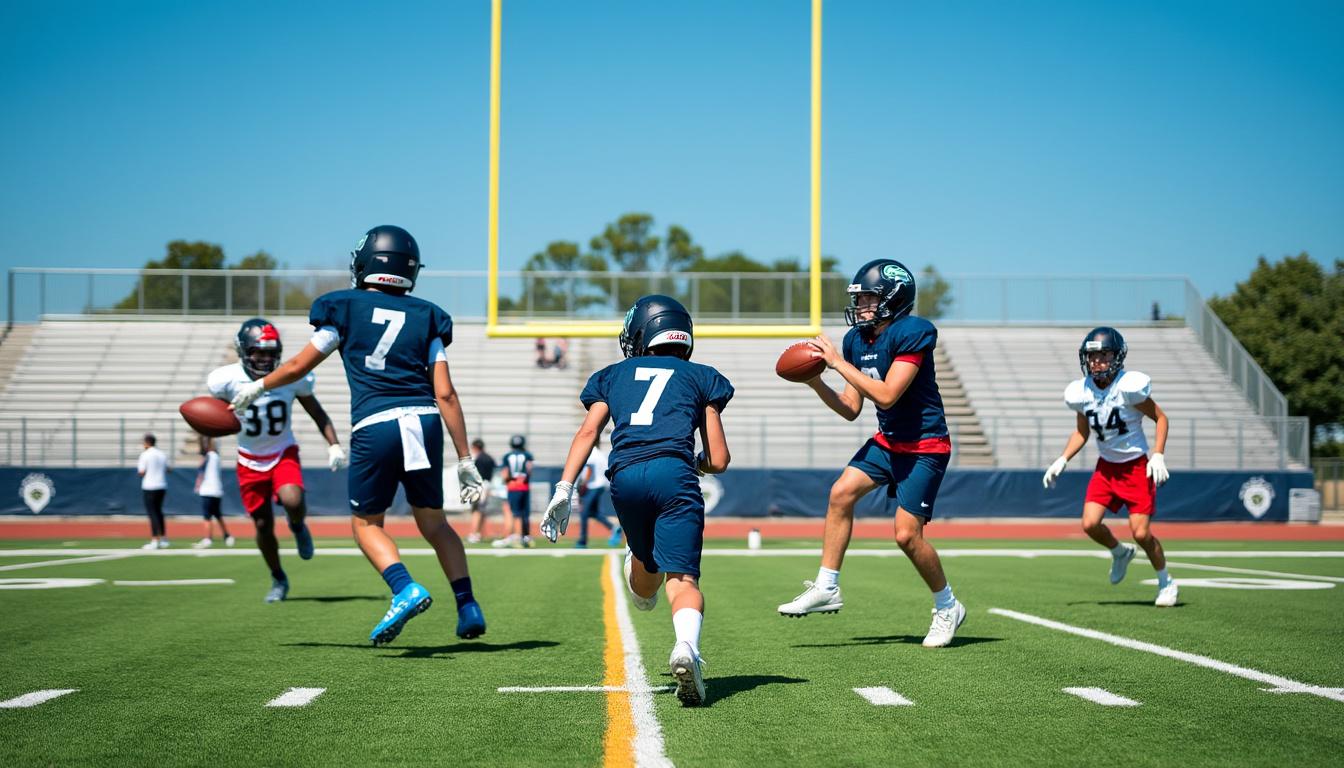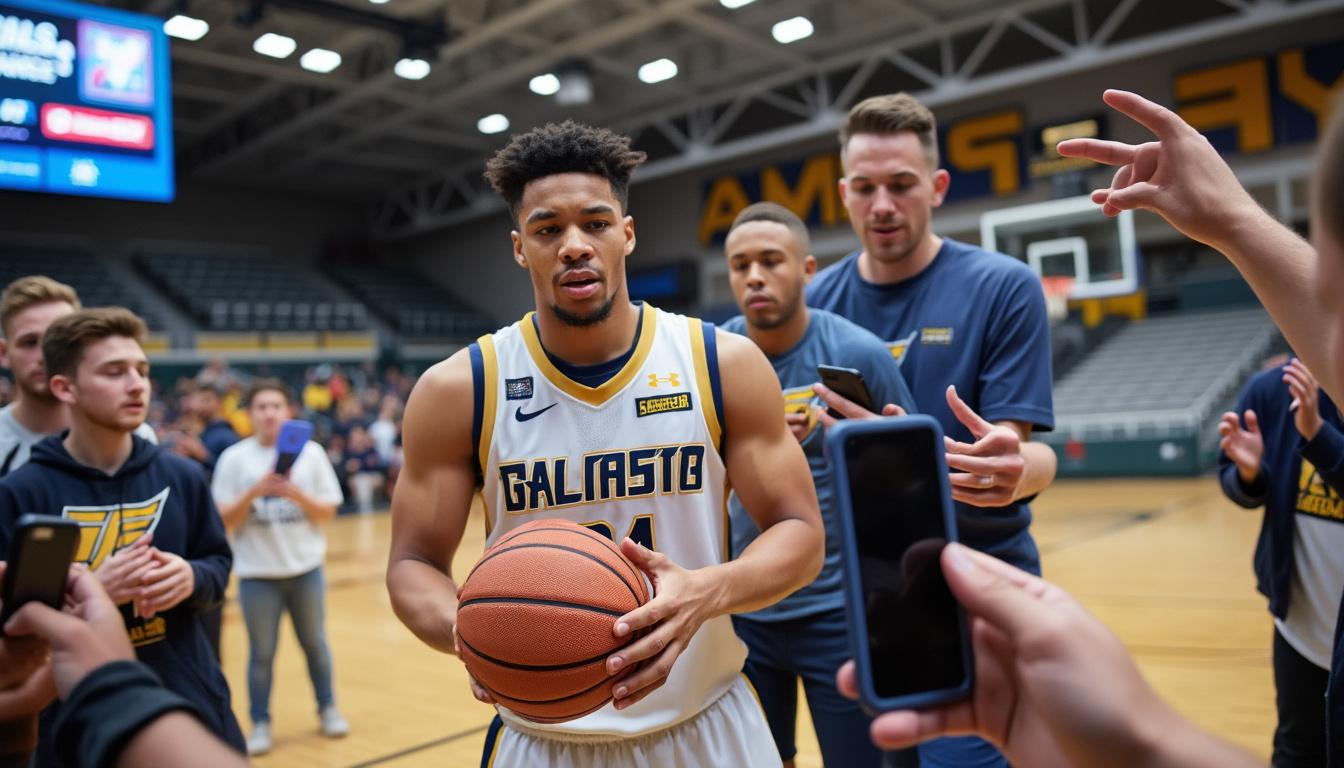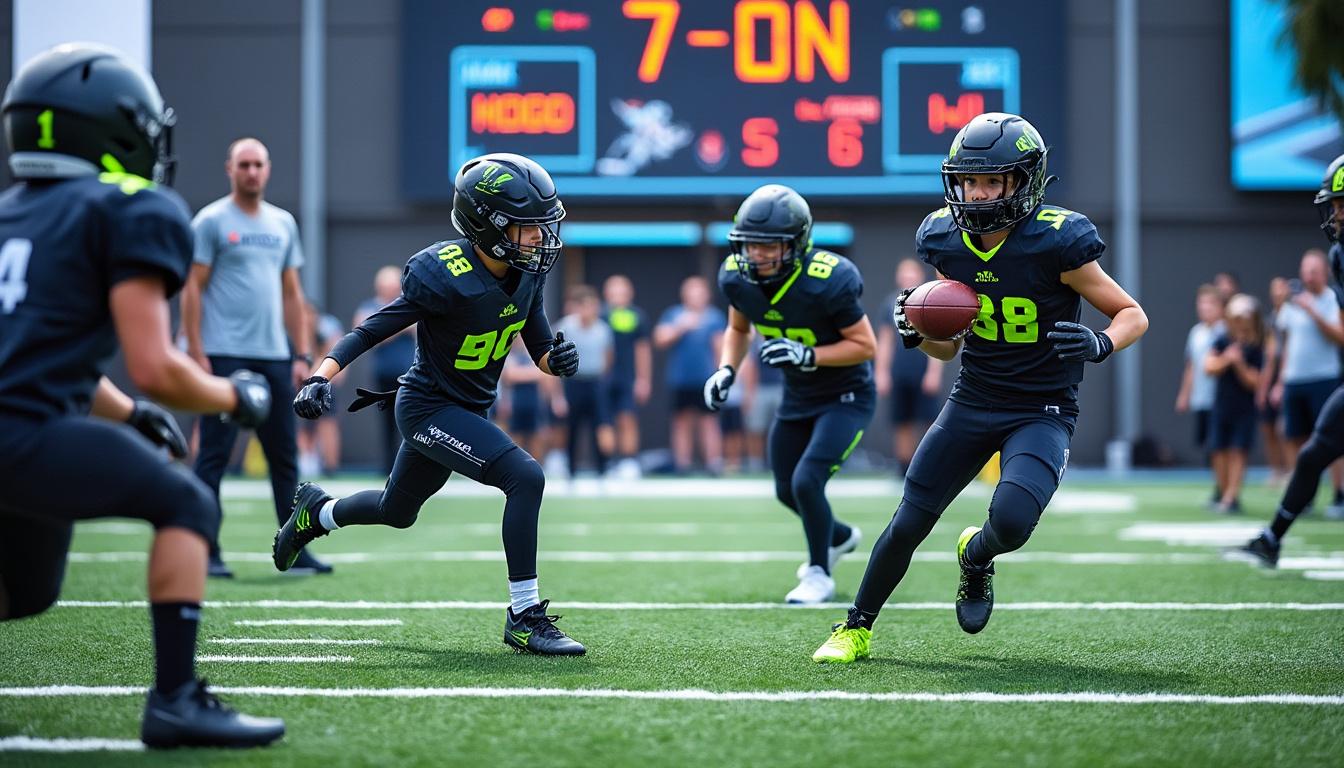As the world of sports continues to evolve, a cultural phenomenon is emerging that captures the imagination of young athletes and fans alike: the rise of 7-on-7 football. This fast-paced version of the game strips away the traditional gear and emphasizes skill over brute force, aligning perfectly with the interests of today’s youth. The impending release of the documentary Trillion Boys showcases this exciting subculture, following an elite 7-on-7 team set against the vibrant backdrop of Los Angeles. The trailer provides a tantalizing glimpse into a world where competition and camaraderie intersect, promising to turn the spotlight on the next generation of football superstars.
Understanding 7-on-7 Football: More than Just a Game
The emergence of 7-on-7 football marks a shift in how the sport is played, promoting agility, speed, and strategic thinking. This modified version of American football is primarily played without pads and helmets, allowing skill players—mainly quarterbacks, receivers, and defensive backs—to shine in a more controlled environment. The format typically consists of two teams, each consisting of seven players, and revolves around passing plays, showcasing athletes’ skills in catching and throwing.
One of the primary appeals of 7-on-7 football lies in its accessibility. Unlike traditional football teams, which require extensive equipment and facilities, 7-on-7 can be played in various settings, making it easier for aspiring athletes to participate. Parks, school yards, and community fields become nurseries for talent and creativity, enabling young players to hone their skills without the intimidations often associated with full-contact football.
The Rise of 7-on-7 Football Across the Country
Since its inception, 7-on-7 football has garnered widespread popularity across the United States, particularly in states with robust football cultures, such as Texas, Florida, and California. This growth can be attributed to several factors:
- Talent Development: The format provides players with an opportunity to refine their technical skills and gain invaluable game experience.
- Showcasing Abilities: Events and competitions draw college scouts and recruiters, helping players gain visibility and attract scholarships.
- A New Model: The introduction of the Name, Image, and Likeness (NIL) landscape encourages players to capitalize on their skills, making football a viable pathway to financial success.
These elements have combined to create a unique ecosystem surrounding 7-on-7 football, nurturing the next generation of talent while transforming how athletes approach their training and career prospects. The Trillion Boys organization, founded in 2021, stands as a testament to this growth, having achieved six regional championships. Their success contrasts sharply with traditional narratives of high school athletics and opens doors for many players previously overlooked by scouts.

The Cultural Significance of the Trillion Boys Documentary
The documentary Trillion Boys not only chronicles the rise of a talented football team but also serves as a lens through which to explore various sociocultural themes. Directed by A.J. Callens, the film follows Los Angeles natives DJ Jordan, now a wide receiver at USC, and brothers Josh and Jack Stupin, the founders of the team, as they navigate challenges within the new NIL landscape.
The backdrop of Los Angeles, a city often viewed as a melting pot of cultures and ideas, plays a vital role in the documentary. The portrayal of young athletes from diverse backgrounds striving for success mirrors the experiences of many fans and viewers. As the Trillion Boys chase their dreams, their journey transcends the football field, reflecting broader themes of ambition, grit, and the relentless pursuit of excellence.
The New NIL Landscape: Opportunities and Challenges
The recent changes in the NIL landscape have reshaped high school sports, impacting how athletes see their futures. Young players are now presented with opportunities to monetize their talents before even reaching college, altering the incentives for participation in sports. Here are some ways in which NIL affects players:
- Financial Incentives: Top-performing athletes can now profit from endorsements, merchandising, and appearances, making football a profitable venture.
- Brand Building: Many young athletes take to social media to grow their personal brands, leveraging platforms like Instagram and TikTok to engage with audiences.
- Parental Expectations: With financial stakes increased, parents often feel pressure to support their children in their athletic endeavors, sometimes leading to unrealistic expectations.
This evolving landscape brings both opportunities and challenges, compelling young athletes to balance their ambitions with demands from coaches, families, and sponsors. The journey portrayed in Trillion Boys captures this nuanced dynamic beautifully, providing viewers with a genuine look into the motivations driving today’s aspiring athletes.
The Impact of Social Media on 7-on-7 Football
In an era where social media reigns supreme, it has played a pivotal role in shaping the landscape of 7-on-7 football. Platforms like Instagram, Twitter, and TikTok have allowed young athletes to showcase their skills, connect with fans, and attract college attention like never before. The accessibility of these platforms has led to a rapid increase in the visibility of high school football talent.
Through video highlights and personal stories, players can share their journeys and experiences with wider audiences. This trend has led to several key outcomes:
- Real-Time Analysis: Coaches and scouts can easily access game footage and analysis, allowing them to identify prospects faster than ever.
- Enhanced Fan Engagement: Fans can connect directly with players and their personal narratives, fostering loyalty and community around teams.
- Content Creation: Athletes increasingly create engaging content that showcases their personalities, enhancing their brand and marketability.
With the rise of content creators within the sports world, the focus has shifted from traditional highlights to storytelling. Young players can curate their narratives and highlight their personalities on platforms like Fanatics and Nike’s channels. This trend is evident in how the Trillion Boys emerge in the documentary, showcasing not only their athletic prowess but also their character and determination.

Facing the Challenges: Personal and Social Impacts
While the allure of fame and financial success in 7-on-7 football is enticing, young athletes like those featured in Trillion Boys also face significant challenges. The immense pressure to perform can take a toll on mental health, leading to burnout and anxiety among high school players. These issues are exacerbated by the constant scrutiny that comes with a digital presence.
The Impact of Pressure on Mental Health
Many players are thrust into the spotlight at a young age, which can create unrealistic expectations and a fear of failure. The struggle with mental health can manifest in various ways:
- Performance Anxiety: The pressure to meet expectations can lead to anxiety during games and practices, hindering performance.
- Identity Crisis: Young athletes may struggle to balance their identities as athletes with their personal lives, leading to feelings of isolation.
- Social Comparison: Constantly evaluating oneself against peers can create a toxic environment, impacting self-esteem.
It is crucial for athletes, coaches, and parents to establish supportive networks that prioritize mental well-being. By addressing these challenges openly, athletes can navigate their journeys more effectively, balancing the demands of competition with their personal growth. With the Trillion Boys documentary, viewers gain insights into how these young athletes deal with their internal and external conflicts, making the story all the more compelling.
The Future of 7-on-7 Football: Where Do We Go from Here?
The evolution of football, especially the rise of 7-on-7 leagues, hints at exciting possibilities for the future. As more young athletes gravitate toward this format, several trends are likely to shape the evolution of the sport as a whole:
- Increased Professional Opportunities: As the popularity of 7-on-7 grows, there might be more opportunities for players to transition to the professional level.
- Expansion of Leagues: New leagues and events dedicated to 7-on-7 football may emerge, providing various platforms for players to showcase their abilities.
- Enhanced Training Techniques: Advancements in coaching, training methods, and performance analytics may further improve player development.
If the trends observed in Trillion Boys are any indicator, the narrative surrounding 7-on-7 football will continue to captivate audiences and inspire future generations. The sport reflects not only athletic excellence but also embodies resilience, teamwork, and the pursuit of dreams, making it a pivotal aspect of youth culture.



